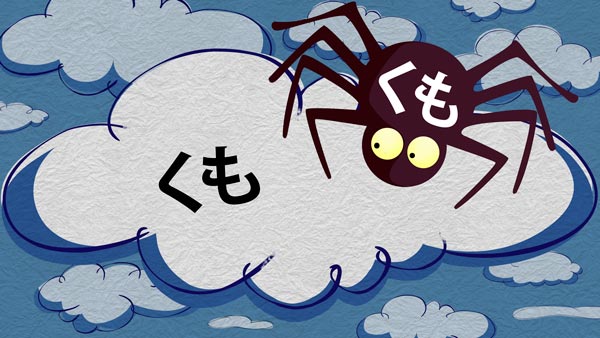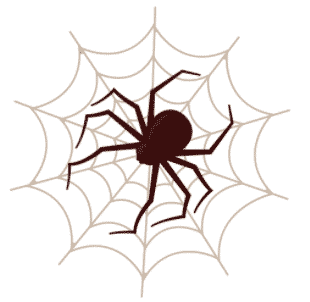Japanese has two ways to say "there is" or "there are."
ある
いる
Both show "existence" but they are NOT interchangeable.

Let me illustrate with the following question:
Do you know the DIFFERENCE in these two sentences?
くもがある。
and
くもがいる。
くも could mean CLOUD or SPIDER.


Both are pronounced exactly the same even with the same pitch accent:
So... which is which?
くもがある and くもがいる
Is it a cloud or a spider?!
If you know the KANJI it is easy.
雲がある。
There is a cloud.
蜘蛛がいる。
There is a spider.
But there is an easier way. Do you know the difference between ある and いる?
くもがある。
and
くもがいる。
THE SECRET
ある shows existence of inanimate objects
いる shows existence of things that move on their own
Since a cloud is pushed by the wind and doesn't move on its own, it uses ある.
(A cloud may move, but it isn't moving on its own accord)
And since a spider can move, it uses いる.
(A live spider may be very still, but it has the ability to move on its own accord)
くもがある。
There is a cloud.
くもがいる。
There is a spider.
Of course, conjugations had to be a little tricky. いる is a Group 2 (-ru verb / 一段動詞) and ある is a Group 1 (-u verb / 五段動詞). All this means is the conjugations are different for いる and ある. In other words, you need to memorize the following chart.
Tense & Negation | いる (moving) | ある (non-moving) |
|---|---|---|
Present plain form | いる | ある |
Present polite -ます form | います | あります |
Past plain form | いた | あった |
Past polite -ます form |
いました |
ありました |
Negative plain form |
いない |
ない |
Negative polite -ます form |
いません |
ありません |
Past Negative plain form |
いなかった |
なかった |
Past Negative polite -ます form |
いませんでした |
ありませんでした |
Notes:
- The past plain form of いる doesn't have the small っ, but ある does: いた and あった
- All conjugations of いる (moving "there is") start with an い
- All conjugations of ある (non-moving "there is") start with an あ except the negative plain form ない and なかった (past negative)
Conclusion:
If something can move on its own accord, use いる. if not, use ある.
いる:
- People
- Animals
- Objects that move on its own such as a moving vehicle or a moving Roomba vacuum appearing from the other room.
ある:
- Buildings
- Non-living objects
- Plants & flowers [they are alive, but can't freely move in any direction]
- Meat and fish prepared for food [it can no longer freely move]
- Anything else that doesn't move on its own such as ideas and facts.
A few fun situations.
- What about a car or taxi? If it is parked, it's ある. If it is moving, it is いる.
- What about a train? It moves like a car, but since it can't freely move in any direction (it has to stay on the tracks), it is ある.
- How about a robot that can move on its own? いる.
- A cow? いる. A slab of beef? ある.
- What about the moon? This is usually ある, although いる is possible if you want to emphasize the movement or its sudden appearance (from behind the clouds, for example). While the moon does move, it moves slowly to our eyes and therefore the ある is most often used to simply show the moon's existence.
- How about a ghost? Well, in theory, it can move on its own so it is いる.
- An alien? いる.
- What about a dead body? Before death, いる; after death, ある.
- What about a zombie? Uh... いる. It moves on its own, right?






That was a great little lesson. I had never thought of iru and aru in terms of movement. Thanks.
Thanks for going through it! Glad you liked it.